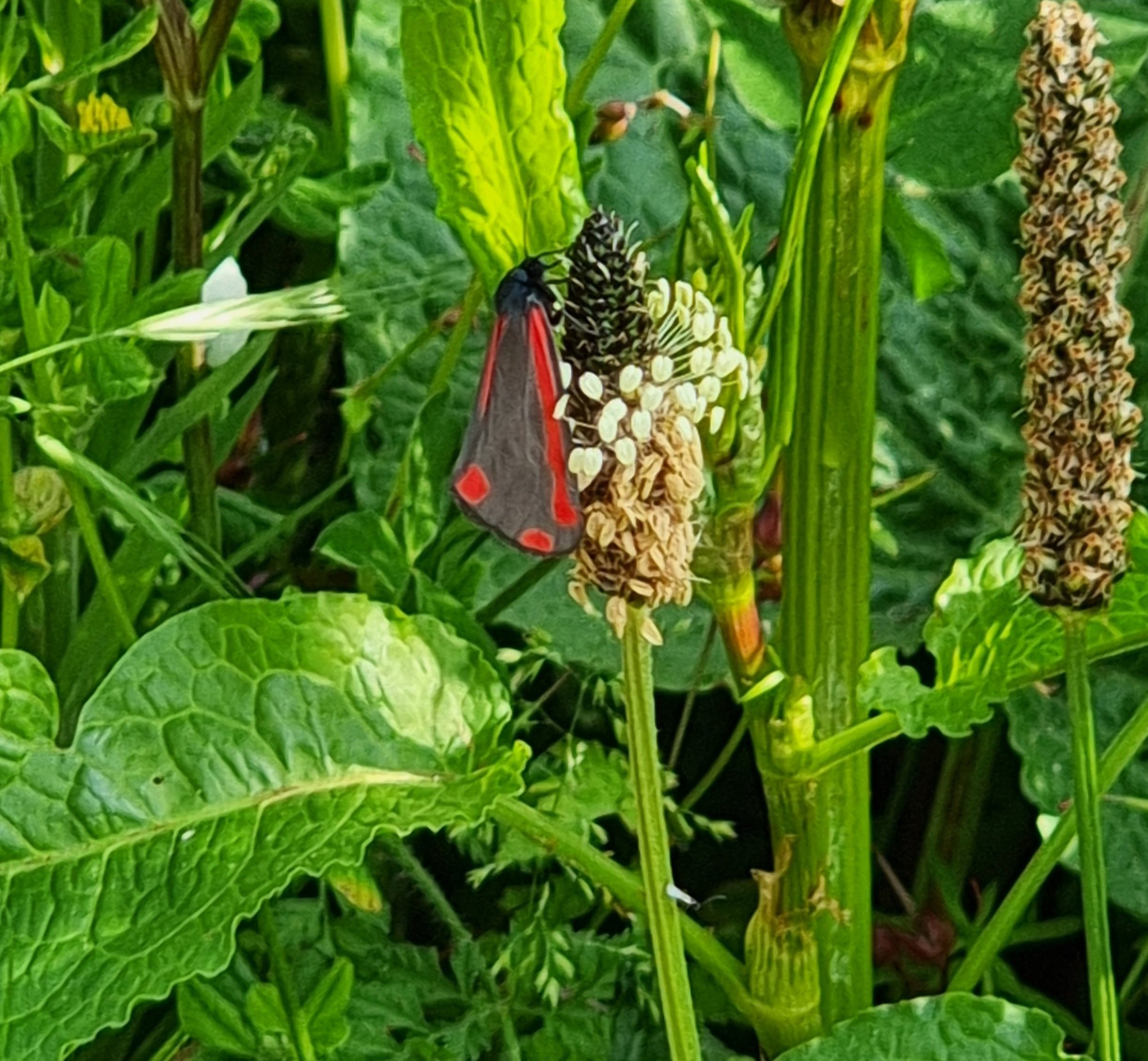As summer fades into autumn, it felt like a good time to reflect on what’s been happening in the wildlife garden this year. It’s been another year of learning so much, and of satisfaction and joy, and of course of the occasional disappointment! I thought I’d start with the wildflower meadow however, which has been amazing this year.
As a recap: In 2020 I created mounds of subsoil, sand, gravel and a little topsoil – all of which was just substrate I had extracted to make the wildlife pond. I then sowed a load of wildflower seeds on the mounds so as to create a sort of hilly meadow. I ended up writing a piece about this in spring 2021, and then a follow up later in the year.
Now that we’re in 2022, the meadow is about a year and a half old – it’s had two growth seasons though.
This year, the meadow truly ‘took off’. It still feels as though it’s in its infancy, but this past summer was the first year it really filled out. As I watched it grow thick, and tall, it was hard not to be filled with a real sense of gratification (although in truth, I was delighted with it last year too!)
The seed mix
The seeds I sowed back in 2021 were sourced from British Wildflower Meadow Seeds. I chose a mix suited to calcareous (chalky, alkaline) soils which had been collected from meadows in Wiltshire and Somerset. I deliberately chose perennial plants (rather than annuals) as I wanted some element of predictability, and I didn’t want to be too hands-on or have to worry about everything seeding around. For those who aren’t sure, perennial plants generally die back to its base at the end of the growing season and then burst into life again in spring. Annuals on the other hand flower only once, before dying – so you either need to re-sow year after year, or ensure that the plants set seed and scatter those.
As I mentioned in previous articles, wildflowers don’t need rich, fertile soil; in fact it’s better to plant them in poorer soils where they won’t have to compete with other vigorous plants and grasses such as nettles, docks and couch grass. Ideally they need a West- or East-facing aspect so they get plenty of sun, however.
Earlier in spring, the meadow was dominated by ribwort plantain and red campion
Lush with life
By June this year, the meadow reached its peak lushness: tall meadow grasses, beautiful ox-eye daisies and meadow sage created height, peppered with lush clusters of yellow from the birds-foot trefoil and black medick, and the vibrant purple of knapweed. Prior to that, it full of red campion and ribwort plantain, and after that, the wild carrot took over and blended wonderfully with the last of the ox-eye daisies, giving a delicate, lace-like character to the meadow.
In the afternoon, the meadow was alive with insects: butterflies, hoverflies and bees, as well as craneflies, dozens of different beetles, and so, so many others that I wasn’t able to identify. In the evening, stop-out bees were relieved of their shift by moths who took a particular liking to the white campion, as well as the ox-eye daisies. I’ve also spotted countless frogs of all sizes sheltering from the blistering sun in the long, dense vegetation.
A cinnabar moth visits the ribwort plantain
I’ve never wanted to overly manage the meadow – in fact in most cases, wildlife gardening usually means doing less, not more. So I gave it a gentle cut (manually, with shears) over about a four week period. This has meant that I’ve interfered with the resident wildlife as little as possible, and cutting before September has also meant that some of the plants have flowered again – a real treat for us, and important early-autumn nectar for insects too.
Extending a hand to nature
The meadow has been a first-hand reminder of just how important meadows are for swathes of wildlife. The meadow in our garden is about 4m squared give-or-take, and if it can be home to that much life – plant, insect, amphibian, then imagine what we could do if we set to restoring the 97% of wildflower meadows that we’ve lost since 1930. The reality is, pockets of wildlife-friendly green space can only ever be so effective. We need wildflower meadows in every village, every town, and every city. It’s about time local councils and government stopped banging on about how important biodiversity is was and actually started doing some meaningful work with communities to help. Without flower-rich spaces, we lose not only the joy of our favourite insect visitors, but also we lose insects – and a life without insects (an eventuality we seem to enjoy toying with at the moment), is not a life we want.
It was hard to get an image of the whole meadow! Here it is in July.
—————
Thanks for reading! I do post a little more regularly on Instagram, if you wanted to check that out. In between work and family time, it’s not always easy to keep up with online activity, but I can tell everyone with absolute conviction: creating habitats for wildlife is one of the single most important things I have ever done - not just for my own sanity, but because it’s the least I can do. I may not be posting about it all the time, but it’s always in my mind and - where possible - in my actions.



